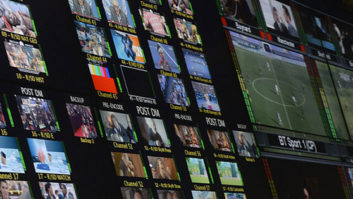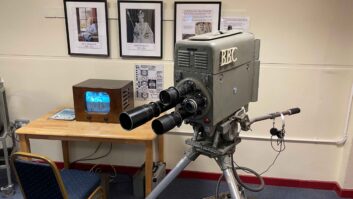Change is often incremental enough that we do not always see its progress. The computer on your desk, the phone in your pocket; new models debut each year building on the ones that went before. The gap between the capabilities of the iPhone 1 and the iPhone 15, for example, is massive. But the gap between each individual phone over each year, not so much.
Every so often though you get the chance to measure a generational change in technology rather than an iterative one. And the thirty year gap between the original Mark Roberts Motion Control Milo, released in 1994, and its successor, the Super Milo, provides just that opportunity.

Milo was not the first motion control rig developed by MRMC, but it was the first that can be considered mass market and to really break away from motion control’s then reputation of just being a technique used in VFX heavy movies. Its uses have proliferated since as the machines have become smaller, faster, and more cost-effective, making a lot of creativity possible. Content creators like The Slow Mo Guys, for example, used one of our Bolt Cinebot rigs to film an homage to Zak Snyder’s unique shot composition on 300 with Snyder himself. As one of them hit an apple with a cricket bat, the rig executed a pre-programmed move, the mounted camera performing a smooth zoom and focus pull halfway through the shot.
Over the last 30 years, motion control is also making considerable inroads into the broadcast sphere. Milo itself produced some of the iconic shots on productions such as HBO’s Game of Thrones.
The Super Milo
First though, the Super Milo and the way it shows how much the technology has progressed. Stability is a key attribute of motion control rigs, and the Super Milo’s updates make it much more stable, providing repeatable movement to 0.1mm tolerances. Besides that, the original Milo moved at 2 metres per second, whereas the new one’s state-of-the-art brushless motors allow it to move at 3 metres per second on track (5 metres per second with combined camera movement) and accelerate up to 400% quicker. That makes it hugely adaptable to a wide range of different scenarios and it can be even more flexible with its movement, needing far less room to get up to a desired speed and, crucially, slow down after the motion pass too.

It can be set up in under an hour and, as well as the engineering aspects, another symbol of the huge changes over thirty years are its links in to other elements of the production workflow. The Super Milo integrates with leading VFX software such as Unreal Engine, can stream real-time positional data, and can synchronise with LED walls for virtual production. In short it has all you need to excel in macro, tabletop, CGI, virtual, and live-action shooting.
Growing broadcast demand
While the latest robotic rig to be developed by MRMC, it is far from the only one. The range has expanded over three decades to fill a wide span of niches and use cases, giving rise to everything from the enormous 3.5 tonne Titan X with its 7 metre telescopic arm, to the compact Cinebot Mini that can operate off batteries for 10 hours and integrates with Push Moco control, the interface that allows operators to simply pre-programme camera movements – something that wouldn’t be possible 30 years ago.
What has been really interesting to track is also the growing impact that motion control is having in the broadcast industry. Broadcasters need to deliver exceptional results in diverse set-ups. They need flexible operations, and broadcast production teams have to deliver to tight turnarounds.
MRMC has played its part of this broadcast impact and continues to play. A highlight of the beginnings of our broadcast history is undoubtedly the creation of StudioBot, a 9-axis robotics system which offered a superior creative range to traditional dolly systems for broadcast studios. Nowadays, this has innovated towards the StudioBot LT, deployed by ITN on their support of the elections coverage by ITV.

Our broadcast kit range has also been following the industry demands for PTZ cameras, which have become go-to solutions for all sorts of broadcast applications, from reality programme coverage to live sports broadcast. The latest 4K units can be installed with minimal seat kill and be operated remotely, even coupled with AI for automatic player tracking.
The technology can be taken further too. For example, we ported all our experience in developing motion control in movies into rigs like ththe AFC-180+, arguably the fastest robotic camera head on the market. This features a built-in slip ring, enabling continuous rotation while maintaining broadcast-quality video and positional data. This makes it ideal for high-speed sports environments (it was initially developed for Formula E) where synchronising multiple cameras and capturing positional data for virtual graphics workflows is essential.
Increasingly we’re seeing applications for the more traditional dedicated rigs as well. This has seen us expand our range into further niches, as exemplified by the 9-axis StudioBot LT, most recently used on ITV’s UK Election night coverage on July 4. This has been developed for studio applications where a high level of automation is required whilst maintaining maximum creative possibilities. The system provides master camera angles and extended motion sequences, with users usefully being able to physically move and save arm positions as keyframes to create a complete move in minutes without the need for any software programming.
Increasing automation
One thing that has been a constant over the past 30 years has been the pressure on broadcasters to deliver more with less. Robotics help them do just that, and the best of the robotic tools marry a best of both worlds approach, stability for macro work and dynamic movement for live action shooting, to enable them to produce the sort of high-quality content that viewers are increasingly expecting.
It’s probably worth concluding with some thoughts on the way the next three decades of motion control will go. The engineering and the science of moving large, stable piece of equipment with sub-millimetre precision time and time again will always be central to the process. But added to this will be a new layer of operational sophistication. The use of AI is enabling us to add more tools than ever to the physical equipment, enabling single operators to oversee multiple camera positions that can automatically track multiple subjects in increasingly complex ways. And robotics are increasingly easy to use, with fast setup times and even being able to record and then precisely reproduce the movement as a director or camera operator physically moves a rig.
The technology has come a long way. But its uses, especially in the broadcast space, are only really just getting started.







